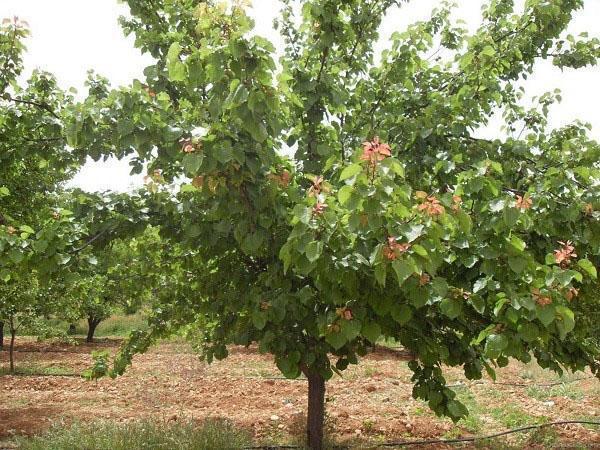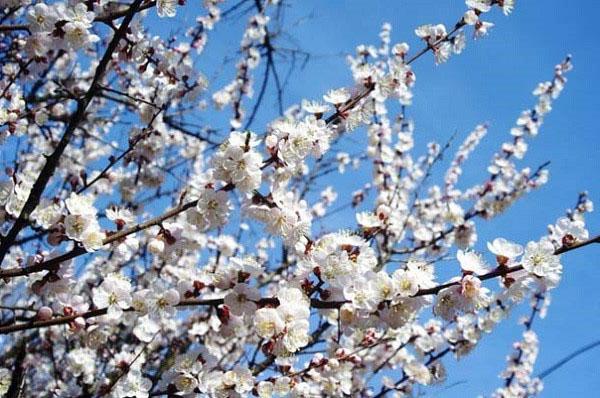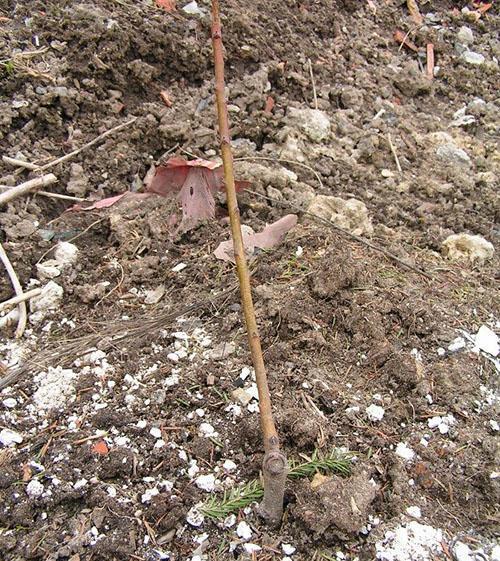Winter-hardy apricot Kichiginsky: variety description, planting and care
 Among the variety of garden trees, it is worth highlighting the apricot - its fragrant juicy fruits have long been loved by both adults and children. It is known that this fruit does not grow in all climatic zones, because it loves warmth. However, in the late 90s, scientists from the Chelyabinsk Institute of Fruit and Vegetable Growing (namely Pankratova and Mulloyanov) developed a new type of apricot - Kichiginsky, which, according to the description of the variety, has increased winter hardiness. This variety was obtained as a result of selection of Siberian and Manchurian apricot species.
Among the variety of garden trees, it is worth highlighting the apricot - its fragrant juicy fruits have long been loved by both adults and children. It is known that this fruit does not grow in all climatic zones, because it loves warmth. However, in the late 90s, scientists from the Chelyabinsk Institute of Fruit and Vegetable Growing (namely Pankratova and Mulloyanov) developed a new type of apricot - Kichiginsky, which, according to the description of the variety, has increased winter hardiness. This variety was obtained as a result of selection of Siberian and Manchurian apricot species.
Characteristics of the variety

Apricot variety Kichiginsky begins to bear fruit from the fifth year of planting. During flowering (in early May), the branches are literally covered with small pink inflorescences, and in the future, the foliage is practically invisible due to the abundance of fruits. The fruits themselves are round, have an average weight of about 13 g. The flesh of the apricot is sweet and sour, while the skin is thin and not bitter. The small pit separates well from the flesh, making this variety ideal for conservation use.
In terms of fruit ripening, the described variety of apricot Kichiginsky belongs to a medium-late type - the harvest is harvested at the end of summer (first half of August). It is a very productive variety, from one adult young tree, with proper care, up to 15 kg of fruit can be harvested.
Features of the variety: advantages and disadvantages
The main advantages of this variety include:
- increased winter hardiness, due to which the apricot Kichiginsky is popular in the regions of the Moscow region;
- high productivity;
- transportability.
The variety has no drawbacks as such, the only thing that can be noted is the small size of the fruits.
The variety is self-fertile, so you should not plant it alone. The best pollinators for him will be the Pikantny apricot and Chelyabinsk early varieties.
Subject to the recommendations regarding planting and caring for apricot Kichiginsky, it is quite possible to get a healthy fruit-bearing garden in a few years.
Apricot planting technology
 When choosing a place for laying an apricot orchard, it is worth highlighting a well-lit area for seedlings, it is desirable that it be on level ground or have a slight slope. Apricot is very sensitive to drafts, so it is better to plant it near a shelter, for example, closer to farm buildings.
When choosing a place for laying an apricot orchard, it is worth highlighting a well-lit area for seedlings, it is desirable that it be on level ground or have a slight slope. Apricot is very sensitive to drafts, so it is better to plant it near a shelter, for example, closer to farm buildings.
In order not to put the tree at risk of contracting verticilliosis, you must not plant it in the area where nightshade crops, strawberries and tobacco were previously grown.
Planting an apricot is best at the very beginning of spring, but spring planting is also allowed. The landing pit should be prepared in advance:
- for spring planting - from autumn;
- for autumn planting - in 2 weeks.
 Dig up the soil in the selected area, having previously introduced fertilizers into it in the following proportions per 1 sq. m .:
Dig up the soil in the selected area, having previously introduced fertilizers into it in the following proportions per 1 sq. m .:
- manure (10 kg);
- superphosphate (60 g);
- potassium salt (35 g).
If the soil on which the apricots will grow is sandy, add organic matter with peat and fertilize with mineral preparations.The acidic soil must be limed, and if the site is with clay soil, add river sand and sawdust.
When planting a large number of seedlings, the distance between them must be at least 3 meters, and in the aisles - at least 5 meters.
It is imperative to lay a drainage layer in the planting hole - it will prevent rotting of the root system. Coarse gravel or broken brick can be used as drainage.
Water the planted seedlings well and mulch the trunk circle to avoid rapid evaporation of moisture.
Below are photos of the Kichiginsky apricot variety:





Further care of seedlings
Caring for planted apricots includes:
- Regular watering. During the period of growth of young shoots and ripening of fruits, especially in dry summers, apricots must be watered, not allowing the soil to dry out completely. In the autumn, the tree does not need such a regime.

- Top dressing. Additional fertilizing can be done from the second year of the seedling's life, bringing them into the near-stem circles. In the spring (when the buds are blooming), apply mineral fertilizers under young trees (no more than 8 g of ammonium nitrate or urea). Repeat top dressing in June. Instead of mineral fertilizers, you can use organic fertilizers (infusion of mullein 1:20 or bird droppings 1:10).

- Pruning. Saplings should be pruned if necessary (if dry shoots are present) and to form a bowl-shaped crown. Work to be carried out in March, until the sap flow began.

- Preparation for wintering. In late autumn, tie up young apricots with reeds to protect them from pests. To prevent sunburn, whitewash with lime mortar.

The apricot variety Kichiginsky described above will fully satisfy even the highest requirements of gardeners. After all, it is one of the best options for growing in the northern regions of the country. The variety tolerates frosty winters very well and gives a large harvest, and these are the most important qualities that fruit trees should have, and you cannot argue with that.